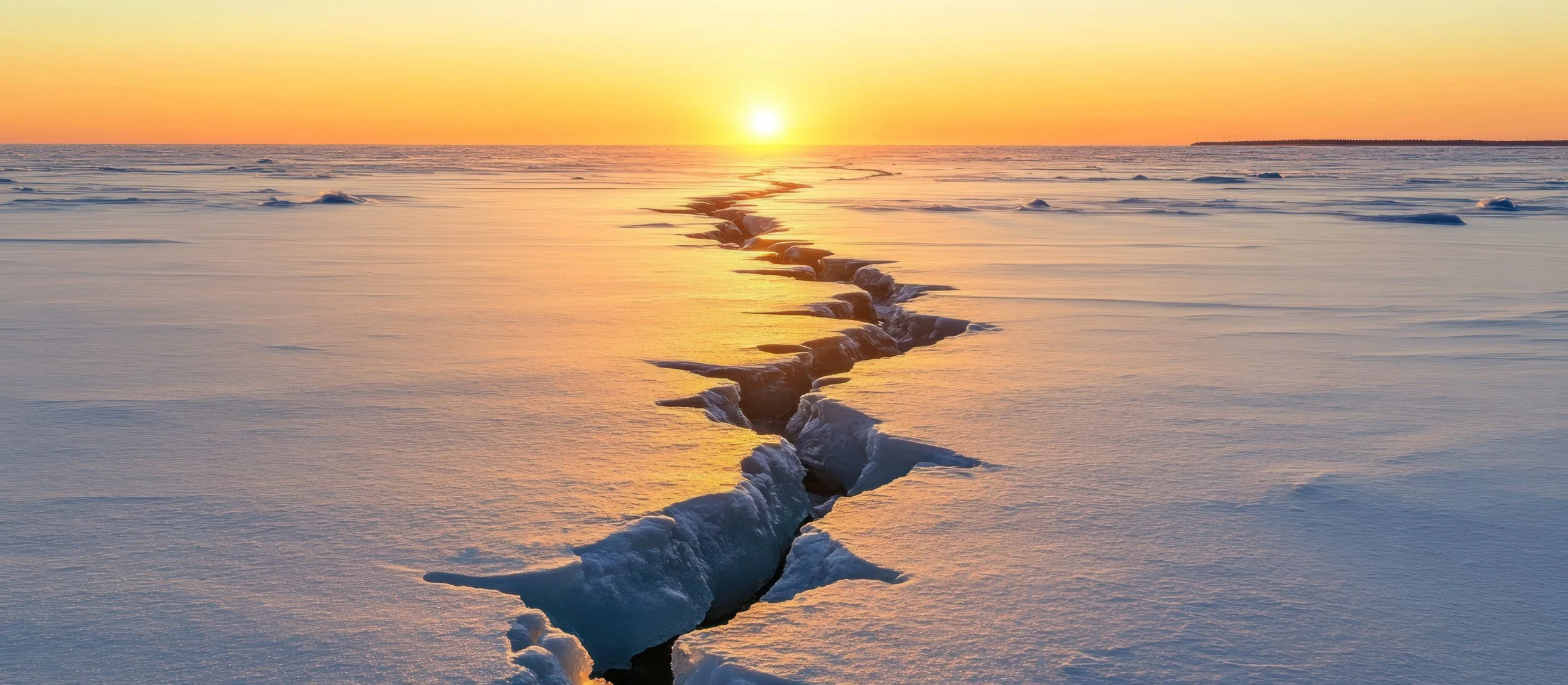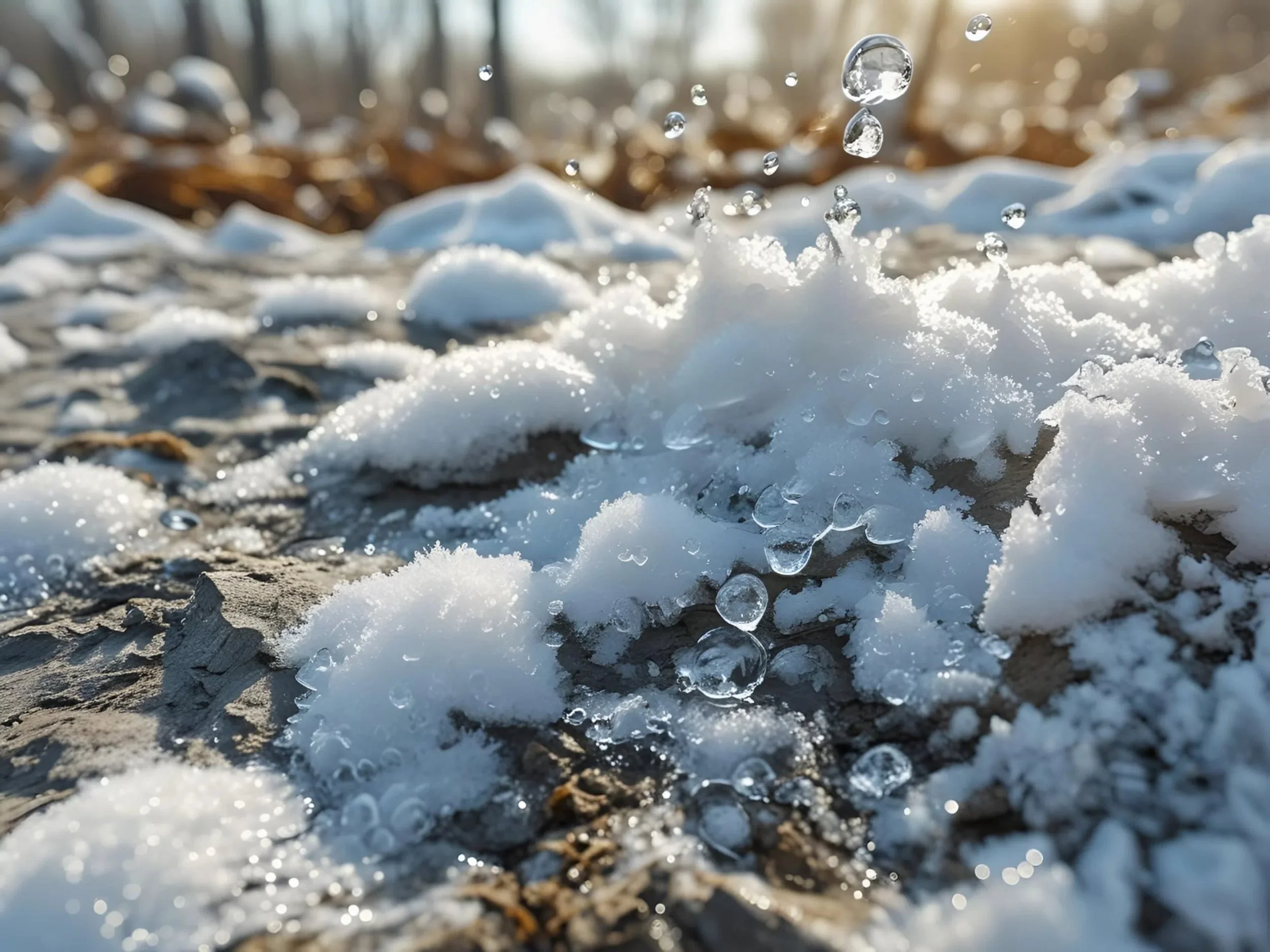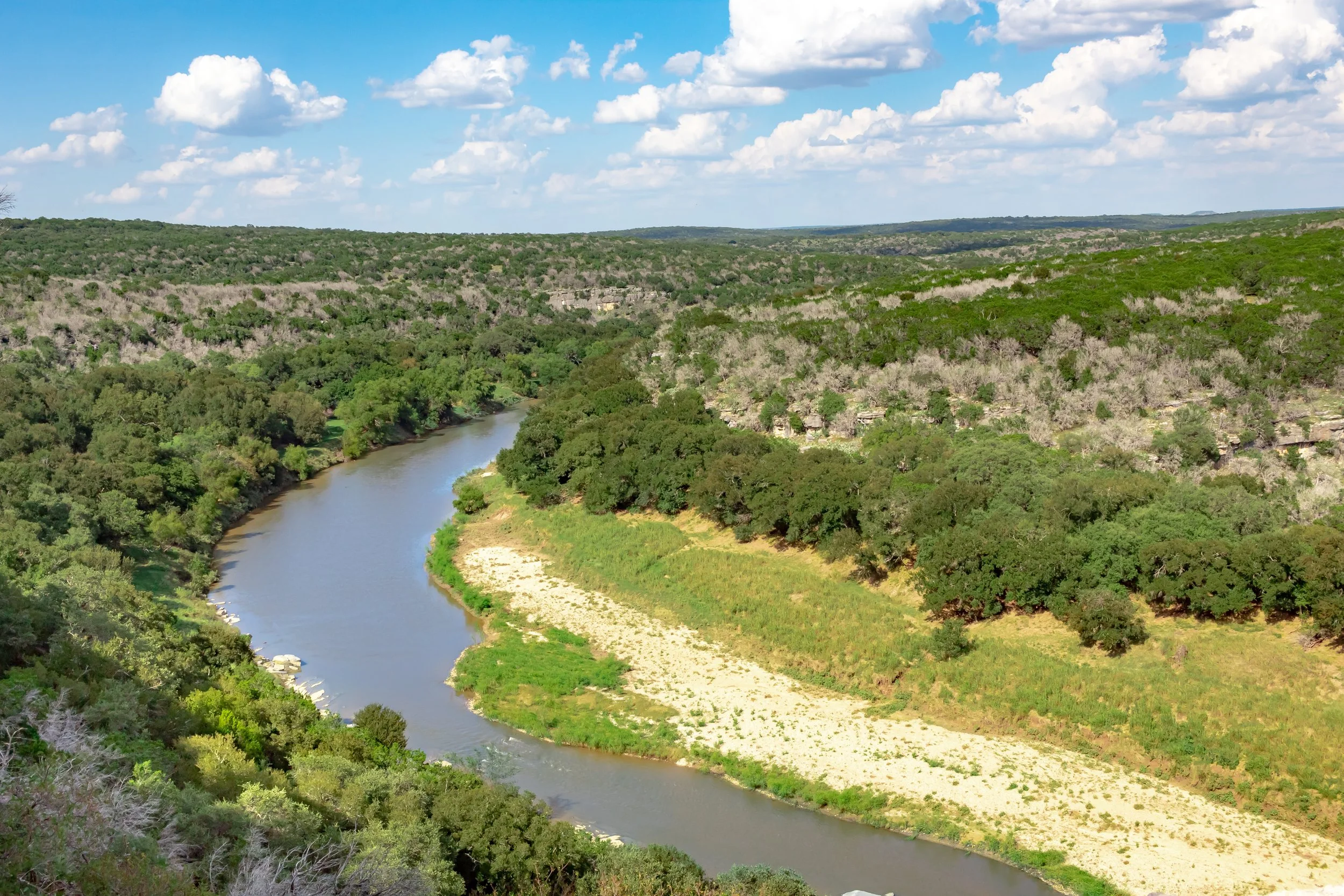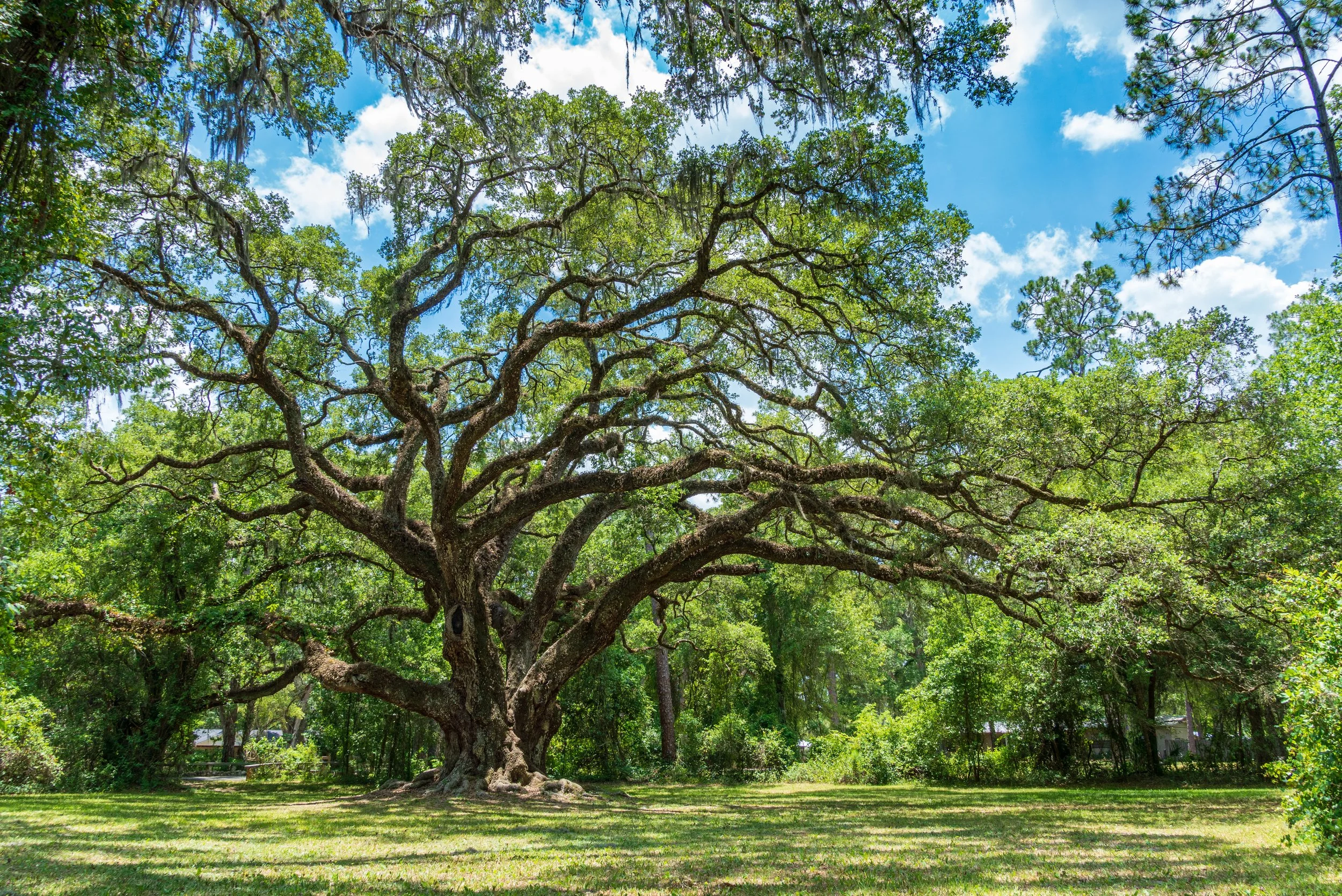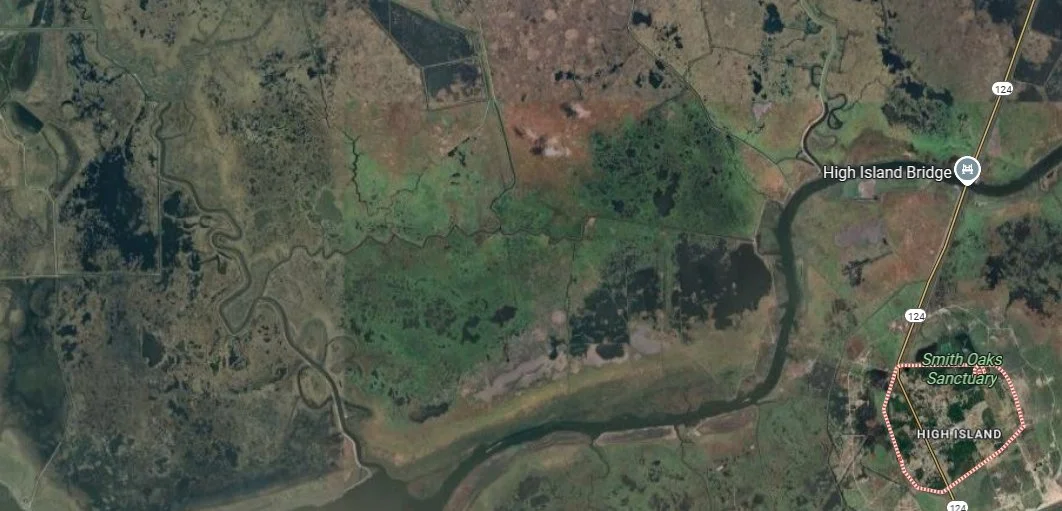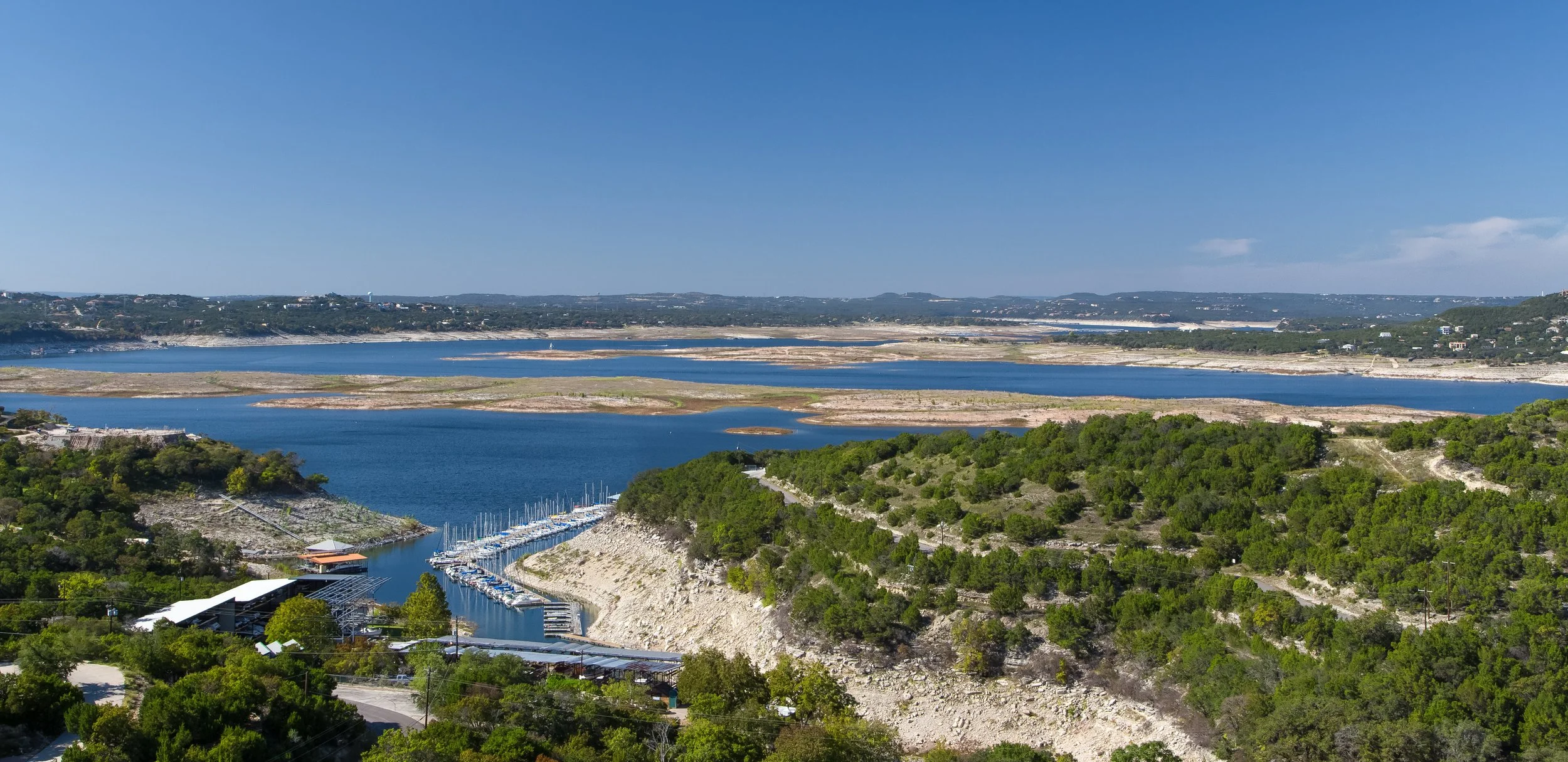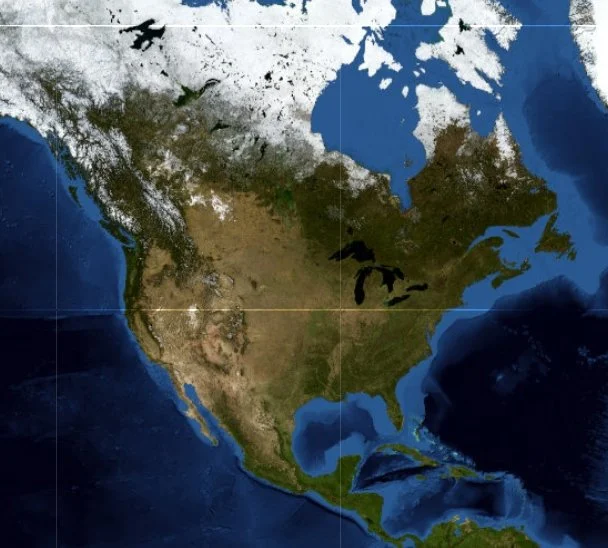The Problems We See
Every environmental crisis is connected.
Most see these problems as separate — drought, flooding, dying species, polluted oceans.
We see the thread.
And it begins with an imbalance: the overgrowth of Ashe juniper and the collapse of Texas’s natural water and energy cycles.
64,760,000,000,000
Gallons of
Water per Year
The Hidden Cost of the Cedar Invasion
The Ashe juniper is not just an invasive plant.
It is a water thief, an EM field disruptor, and the trigger behind countless problems few dare to connect.
“Every year, invasive Ashe juniper silently drains more water than the entire Edwards Aquifer can hold — and with it, the life of Texas itself.”
The Purpose of the Cedar
Long before it was called an invader, the Ashe juniper was nature’s pioneer.
It emerged when Texas was locked under the grip of the last ice age — a frozen land where few plants could take hold.
Where life saw a wasteland, the cedar saw its duty.
The First Duty: Melt the Ice, Warm the Earth
The cedar evolved to thrive where nothing else could grow.
Its acidic leaf litter melted patches of permafrost and snow.
Its dense canopy absorbed and radiated heat, raising the surface temperature.
It blocked snowfall, stopping new ice from accumulating.
The cedar’s first role was to terraform the frozen landscape, creating pockets of warmth where life could begin again.
The Second Duty: Make the Desert Ready for Life
When the ice retreated, the land it left behind was dry, sandy, and barren.
Here, the cedar’s second purpose came alive.
Its deep roots reached groundwater that no other plant could access.
It drew this mineral-rich water upward, seeding the surface with nutrients.
Its canopy caught sand in the wind, trapping sediment and beginning the first layers of soil.
Its fallen needles built acidity into the ground — protecting it from other plants too early in the cycle.
The cedar turned sand into soil, and its own shade created humidity and pressure to soften the land.
It was not competing — it was preparing.
The Third Duty: Pass the Torch
The cedar was never meant to dominate forever.
Once its work was done and the soils reached a healthy balance, native forests were supposed to take over:
Oaks
Elms
Grasses
Insects, fungi, and microbial webs
These species would cool the surface, stabilize the land, and invite the storms back.
As the positive pH soils and expanding forests reached the cedars, they would naturally die, leaving behind their water-rich corpses to feed the next generation of trees.
Their root channels would become the highways for oak roots and grass networks to follow.
The cedar’s purpose was to begin, then step aside.
The Broken Cycle
Picture provided from Google Earth at 29°35'21.0"N 94°25'01.2"W. Date 07/28/2025Humans broke this chain of succession.
By clearing native hardwoods, suppressing natural fires, and grazing livestock across the land, we stopped the forests from advancing.
The cedar’s role — which should have ended — never did.
Believing the land was still in crisis, the cedar kept doing what it was designed to do:
Heating already scorched ground
Repelling the insects and fungi that would build new soil
Pushing storms away instead of inviting them in
Poisoning the soil to defend its territory
When Purpose Becomes Poison:
The Ashe juniper is not an enemy — it is a memory of Earth’s last recovery, trapped in time.
Its original purpose was to heal a frozen world, but without succession, it now heats what is already hot and kills what is already struggling to live.
It is doing its job too well, at the wrong time.
Finishing the Forest
To restore balance, we must finish the process the cedar started.
Remove cedar where it now harms.
Reintroduce the hardwoods and grasses it once prepared the land for.
Restore the microbial webs, the insects, the animals that rebuild the soil.
We do not burn the cedar in hatred.
We transition it in purpose.
The cedar was the fire.
But the forest still waits for its rain.
The Water Cycle Collapse
The water cycle — the endless movement of water from ground to sky and back again — is the heartbeat of life in Texas. For millions of years, forests, rivers, and rain worked together in harmony to keep this cycle strong. The Ashe juniper has broken this rhythm.
When the cedar spreads unchecked, it consumes massive amounts of groundwater — over 65 trillion gallons every year — draining the lifeblood that feeds streams and aquifers. Its thick canopy captures nearly 80% of rainfall, preventing it from ever reaching the soil. Instead of soaking into the ground to refill the aquifers, the rain is intercepted, trapped in its leaves, and lost to evaporation.
At the same time, cedar raises the surface temperature of the land. The hotter ground speeds up evaporation, drying rivers and shrinking reservoirs even faster. Without the natural evapotranspiration of native forests — the process where trees release water vapor that helps form rain clouds — storms stop forming where they’re needed. The skies clear, but not in a way that brings relief: they clear because the cycle that creates rain has been broken.
This collapse means less water underground, fewer storms above, and longer droughts everywhere.
When storms do finally arrive, the dry, hardened soil can’t absorb the sudden rainfall, turning it into deadly floods.
What was once a cycle of renewal has become a cycle of loss — all triggered by a tree doing the wrong job at the wrong time.
Lake Travis, Austin, Texas
Hurricane Intensification: The Storms That Shouldn’t Be
Hurricanes are not random monsters. They are Earth’s way of redistributing heat and balancing energy between the ocean and the atmosphere. When the land and water work together, storms form, release their energy, and break apart naturally. But when that balance is lost, storms grow stronger, last longer, and hit harder.
The Ashe juniper’s disruption of the water cycle plays a direct role in this imbalance.
By hoarding groundwater and blocking rainfall from reaching the soil, rivers and streams run low. Instead of carrying cool, oxygen-rich, nutrient-laden freshwater into the Gulf of Mexico, they now deliver only a trickle of warm, contaminated water. This warm, stagnant outflow no longer helps to stabilize the Gulf — it fuels it.
At the same time, the loss of native forests along the coast means there is less humidity and fewer ions feeding the ionosphere. These forests once acted as natural moderators, dispersing energy through evapotranspiration and EM field interactions. Without them, the Gulf becomes an unchecked energy pool, and hurricanes draw on that power like a spinning engine with no brakes.
When a storm forms over this superheated, low-oxygen water, it intensifies rapidly. It’s no coincidence that the Gulf has seen a rise in Category 4 and 5 storms — they are feeding on the imbalance we’ve created. The Earth is attempting to rebalance what was lost, using storms as its only available tool. But without the natural dampening effect of healthy rivers and forests, that rebalancing comes in the form of destruction.
Every stronger hurricane is a signal. It’s not just a weather event — it’s the planet screaming that its water cycle has been broken.
Flooding and Mudslides: When the Ground Turns Against Us
Picture taken by Vaelus Founder and CEO on July 5th, 2025 at Rebecca Creek Road, Spring Branch, Tx 78070
Floods and mudslides in Texas are not simply the result of heavy rain — they are the result of land stripped of its defenses. The Ashe juniper’s dominance has rewritten the very structure of the soil, turning once fertile ground into a barren, compacted crust that no longer absorbs water or holds itself together.
The cedar’s acidic leaf litter poisons the topsoil, killing native grasses, forbs, and trees that once formed a living carpet across the Hill Country. Without this vegetation, the vast root systems that anchored the soil vanish, leaving the earth loose and unstable. At the same time, the hardened, lifeless surface prevents rainfall from soaking in. The microscopic tunnels created by insects — pathways that once guided water deep into the ground — disappear when bug life collapses under the acidic conditions. The soil becomes a dead shell, unable to drink, unable to hold.
Erosion, which was once held in check by a network of roots and life, now becomes the cedar’s ally. Its own long taproots cling to the rock beneath while the soil above washes away. Every storm that sweeps across this landscape now tears loose acres of ground, carrying sediment, acid, and debris downhill. Streams clog, riverbeds choke, and valleys fill with unstable mud.
When severe storms or hurricanes finally deliver the rain the land has been starved of, the ground cannot absorb it. Instead, the water pours off the hillsides in torrents, gathering force with every drop, every stone, every tree it rips from the earth. This cascading runoff feeds the floods, making them faster, more violent, and deadlier with each passing storm.
The land no longer protects us.
It has been stripped bare by imbalance, and now every drop of rain becomes a hammer.
The Cedar Spillover Effect
There is a hidden tipping point in every storm, a moment where Texas shifts from drought to disaster in an instant. This is caused by a phenomenon we call the Cedar Spillover Effect.
For most of the year, Ashe junipers act like sponges, capturing rainfall in their dense canopies before it ever touches the ground. Each tree holds gallons of water on its leaves and needles, preventing it from replenishing aquifers or soaking into the soil. During light and moderate rains, this interception starves the land below.
But during prolonged storms, there comes a point where the cedar reaches its saturation limit. Its leaves can hold no more water, its roots can drink no more. When this limit is reached, the rain it once held back is suddenly unleashed, cascading to the ground all at once.
Instead of soaking in gradually, this delayed deluge slams into soil that has long been hardened by drought and stripped of vegetation. Nothing slows it down. Nothing absorbs it. The water rushes downhill, sweeping away loose earth, debris, and anything in its path.
When this happens across 20 million acres of cedar-infested land, the effect is catastrophic.
The storm’s impact multiplies, turning rainfall into a wall of water that feeds flash floods and mudslides with terrifying speed.
The Cedar Spillover Effect is why floods in Texas can transform from dangerous to deadly in minutes. It is not just the rain — it is the sudden release of millions of gallons that were never supposed to fall this way.
“This effect is what unleashed the devastation and claimed lives earlier this month in the Texas Hill Country. I witnessed it firsthand — the raging water, the broken homes, and the families left searching. I stood there, trying to help in the recovery efforts, knowing this tragedy was not just a storm but the result of a system out of balance. No one should have to face what I saw that day.
And I will be damned that this ever happens again!”
From Root to Tide: The E.Coli Surge and the Gulf’s Dead Zone
When the balance of the land collapses, it does not stop at the Hill Country. Every drop of rain that falls carries the story of the ground it touches.
Floodwaters rushing from cedar-stripped hillsides do more than move soil; they pick up everything the land can no longer process — animal remains, decomposing organic matter, livestock waste, agricultural chemicals, and sewage that failing soils can no longer filter. In healthy ecosystems, microbial webs, grasses, and layered soils naturally break down and neutralize these byproducts. But in cedar-dominated landscapes, where life at the ground level has been wiped away, nothing stops the contaminants from running free.
These polluted torrents surge southward, flooding towns and rivers with E.Coli-laden water, contaminating reservoirs, and threatening public health across South Texas. This is not a one-time event — it’s a chain reaction that now happens with every major flood. Wells and water systems that were once safe are now vulnerable.
As these contaminants travel downstream, they empty into the Gulf of Mexico, carrying with them the concentrated runoff of a broken land. Instead of fresh, cool, oxygen-rich river water, the Gulf now receives a mix of heat, pollutants, and decaying organic matter. This toxic cocktail feeds algal blooms that strip oxygen from the water, creating dead zones where fish, shrimp, and marine life cannot survive.
The Gulf dead zone grows larger with every flood event. Storms — instead of bringing renewal — now carry decay, expanding the area of lifeless water off the Texas coast. This is not just an environmental issue; it is an economic disaster, strangling fisheries, tourism, and coastal ecosystems that millions depend on.
What begins as imbalance in the Hill Country ends as death in the Gulf.
The cedar’s corruption of purpose sets this chain in motion, and only by restoring the land at its source can we stop this tide of decay.
The Gulf’s Dying Heart: The Expansion of the Dead Zone
The Gulf of Mexico should be one of the most vibrant ecosystems on Earth — a cradle of life where rivers meet the sea, mixing nutrients, oxygen, and energy that feed everything from plankton to whales. But the balance has been broken. What begins in the Hill Country now ends as death in the Gulf.
With the spread of Ashe juniper and the collapse of Texas’s water cycles, freshwater flow to the Gulf has been reduced to a trickle, and what little arrives is far from life-giving. Instead of cool, oxygen-rich, turbulent river water that stirs the Gulf and breathes oxygen into its depths, the water is now warm, stagnant, and polluted. Floods that follow storms only make it worse, rushing massive amounts of E.Coli, agricultural runoff, livestock waste, and sediment into the ocean all at once.
This toxic influx triggers a devastating cascade:
The lack of cool, oxygen-rich water means there is no turbulence to mix oxygen into the upper layers of the Gulf.
E.Coli and other contaminants stress and kill the phytoplankton — the microscopic plants that form the base of the oceanic food web.
With phytoplankton populations crashing, the zooplankton that feed on them — the tiny animals that convert sunlight and algae into energy for larger life forms — also begin to collapse.
At the same time, the loss of zooplankton allows algae blooms to spiral out of control, feeding off the nutrient-rich runoff but never being converted into usable energy for higher life forms.
These algae blooms decompose, consuming even more oxygen in the process, and leave behind vast zones of hypoxia — areas with so little oxygen that fish, shrimp, and marine life suffocate and die.
The result is the Dead Zone: a growing stretch of lifeless water where nothing can survive. Once a natural filter, the Gulf has become a stagnant basin of decay, fed by every imbalance upstream.
When rivers stop feeding the Gulf with life, they feed it with death.
This is not a distant problem — it is the visible proof that the collapse of Texas’s ecosystems is rippling outward, strangling one of the richest marine environments on Earth.Only by restoring the land can we save the sea.
The Salinity Feedback – When the Land Stops Freshening the Sea
The balance between salt and fresh water is not a passive state. It is a dynamic exchange maintained by forests, rivers, and the sky. Throughout Earth’s history, coastal forests and inland green zones have acted as natural desalination systems—drawing water from the ocean-atmosphere exchange and returning it as freshwater through storms and rain. This balance has kept the oceans oxygen-rich and life-sustaining.
When this cycle falters, the oceans grow salty, and life begins to fade.
Forests as Natural Desalination Pumps
Forests do more than regulate land. They purify the water cycle itself:
Evapotranspiration releases vast amounts of freshwater vapor into the sky, feeding storm systems that rain far inland.
These storms not only water the land—they return to the oceans as diluted, oxygen-rich freshwater.
This continuous loop keeps salinity in check, stabilizing ocean chemistry and climate alike.
When forests fall—especially at key coastal nodes—this natural desalination collapses.
The Gulf of Mexico: A Salinity Crisis
The Gulf of Mexico is becoming an oceanic Dead Sea.
With the loss of Texas’s coastal forests and the cedar-driven collapse of inland water cycles, less freshwater reaches the Gulf—both from rivers and the sky.
The Gulf’s waters heat faster, absorb more energy, and hold less oxygen.
Higher salinity fuels dead zones and creates the perfect conditions for supercharged hurricanes that draw power from an overheated, unbalanced sea.
The dead zone is not simply caused by agricultural runoff.
It is the result of a harmonic breakdown—the land no longer freshening the sea.
Earth’s Emergency Valve: Polar Ice
As salinity rises, Earth responds.
The poles, holding vast reservoirs of freshwater, release meltwater into the oceans to dilute the imbalance.
This is not random melting—it is the planet’s attempt to restore harmony.
But this “solution” comes with a price: the destabilization of polar thermodynamics, rising seas, and further shifts in jet stream behavior.
The Warning of the Dead Sea
The Dead Sea offers a glimpse of this process on a small scale:
Freshwater input stopped.
Evaporation exceeded replenishment.
Salinity rose beyond the threshold for life.
The Gulf of Mexico is following the same path, only on a continental stage.
The Cedar Connection
The invasive cedar’s water theft reduces groundwater and river discharge into the Gulf.
Its suppression of evapotranspiration stops the storms that once carried freshwater back to the sea.
The Gulf grows saltier, dead zones expand, and hurricanes intensify.
This is not coincidence—it is the cascading failure of a system that depends on land and sea working together.
When the land stops freshening the sea, the oceans cry out in salt.
If we restore the forests, we restore the song that keeps the waters alive.
The Collapse of Wildlife: Death From the Ground Up
The Ashe juniper’s corruption of purpose has not only disrupted the water and the Gulf — it is dismantling life on land the same way it dismantles life at sea. Its acidic soil, aggressive canopy, and water hoarding create a hostile environment where nothing but cedar can thrive.
This begins with the plants. Native grasses, forbs, and hardwood saplings die in the shadow of the cedar, unable to compete in poisoned soil that rejects their roots. Without plants, the insects vanish — pollinators, decomposers, and the countless species that form the foundation of every food chain. Their disappearance tears holes through the ecosystem.
With no insects to eat, the birds begin to starve. Species like the golden-cheeked warbler are trapped in this collapse, forced to nest in cedar stands that were never meant to be their home. Here, they face concentrated predators — rat snakes, crows, raccoons, hawks — all drawn to the same few nesting areas because the diversity of the landscape is gone. Every year, more nests fail, and more birds vanish.
As insect and bird populations shrink, the predators that rely on them — foxes, coyotes, and raptors — eventually follow. The same process that leaves the Gulf starved of phytoplankton and zooplankton leaves the land stripped of bugs and birds. The cedar creates an empty world, where life either clings to survival or disappears altogether.
The death of plants triggers the death of insects.
The death of insects triggers the death of birds.
The death of birds triggers the death of predators.
It is a chain reaction, a downward spiral — all from a single tree out of place and time.
Golden Cheek Warbler: Trapped in an Ecological Death Spiral
The golden-cheeked warbler (Setophaga chrysoparia) is one of Texas’s most iconic endangered species. Conservation programs have long treated it as a bird that requires Ashe juniper to survive.
The truth is far darker:
The warbler is not thriving in juniper forests — it is trapped by them, forced into degraded habitat where predators and prey are unnaturally concentrated, leading to a slow-motion extinction.
The Ashe Juniper Trap
Conventional wisdom claims cedar protects the warbler. The opposite is true.
Conventional View
Warblers need Ashe juniper to survive
Juniper preserves nesting
Protecting juniper protects the species
Ashe Juniper provide seeds as a food source
They should thrive with Ashe Junipers
Harmonic Reality
Warblers use juniper only because native hardwood habitats have been destroyed
Juniper groves expose nests to predators and lack protective undergrowth
Conservation focused on juniper funnels warblers and predators into the same degraded patches
Ashe Junipers do not produce seeds until after Golden Cheek Warbler’s have already migrated back South. Additionally, their main food source is insects.
The reality is that the Ashe Junipers are killing the Golden Cheek Warbler. One generation at a time.
The unchecked spread of Ashe juniper has removed native oaks, elms, and understory plants that once shielded nests and supported insects. The warbler’s reliance on cedar is not natural — it is survival in a broken ecosystem.
The golden-cheeked warbler’s primary food source is insects — caterpillars, spiders, and other small arthropods found on oak and hardwood leaves. In healthy forests, these insects are abundant because the diverse plant life supports a thriving web of life.
But in cedar-dominated landscapes:
The acidic soil prevents the growth of native hardwoods and understory vegetation.
The lack of plant diversity collapses insect populations.
Without insects, the warblers cannot find enough food to raise their young successfully.
So while some claim the cedar offers "essential" nesting habitat, the truth is the opposite. It provides no food (neither seeds nor insects), and it forces the warblers into a starving, predator-filled environment where survival rates plummet.
The cedar doesn’t sustain the golden-cheeked warbler —
it starves it.
Predator Saturation: The Silent Killer
Ashe juniper’s dense but structurally barren groves create perfect hunting grounds.
Predators converge where prey has no escape.
The Predator Echo Collapse:
The unchecked spread of Ashe juniper has destroyed the native hardwood and grassland mosaic that once provided safe, diverse nesting sites for the golden-cheeked warbler and countless other species. In this degraded landscape, both prey and predators are forced into the same trees — the juniper itself — creating an unnatural concentration where nests are exposed, predictable, and easily raided. This has allowed predator populations, from rat snakes to raccoons and crows, to remain stable or even increase as they exploit the dense, cedar-dominated terrain. However, this advantage is temporary. The collapse of the ecosystem is happening from the ground up, and because prey populations like the warbler are the first to suffer, the predators that rely on them will inevitably follow. When the prey disappears, predator numbers will crash, and with them the delicate balance of the entire Hill Country will unravel. This is not just the loss of a bird — it is the slow ignition of an ecological chain reaction.
The Thermodynamic Effect: How the Cedar Redirects the Sky
The Ashe juniper’s impact doesn’t stop at the soil — it reaches into the sky. By dominating the Hill Country landscape, it changes the very thermodynamics of the atmosphere above it, reshaping weather patterns and pushing Texas deeper into drought.
Unlike native hardwoods, which cool the land through evapotranspiration (the release of water vapor that forms clouds and rain), the cedar releases almost no moisture into the air. Instead, it heats the ground beneath its canopy and the air above it, creating dry, hot atmospheric pockets. These pockets rise, forming high-pressure zones that repel incoming storms.
As these hot, dry air masses expand, they redirect storm systems away from cedar-dominated regions. Clouds dissipate, rainfall weakens, and the jet streams that once carried moisture across Texas are bent off course. This is not just a local phenomenon — it ripples outward, weakening storm pathways far beyond the Hill Country.
This thermodynamic manipulation allows the cedar to create the exact environment it thrives in:
Hot, dry air that suppresses competitors
Reduced humidity that limits cloud formation
Persistent drought that ensures only the cedar’s deep roots can survive
The Ashe juniper has become a weather-maker.
By starving the air of moisture and heating the land, it forces the sky itself to serve its survival — at the cost of everything else.
Broken Chains: How Cedar-Starved Skies Reach the Rockies and the Poles
The effects of the Ashe juniper’s disruption are not confined to Texas — they ripple across the entire continent. The loss of evapotranspiration and rainfall in the Hill Country does more than create local drought; it starves the great weather engines to the north.
Moisture that once rose from Texas’s forests, forming clouds that traveled and cooled as they moved toward the Rocky Mountains, is now absent. Storms that do reach the Rockies arrive weakened, carrying less snow and rain than before. Over time, snowfall in the Rockies has diminished, cutting off one of the key drivers of North America’s climate balance.
The Rockies were once a cold anchor for the continent, drawing in hot southern air and forcing it upward to release its moisture. This interaction helped regulate the jet streams and fed the freshwater systems of rivers stretching across the United States. But without snow to maintain their cold influence, the Rockies’ pull weakens.
As this anchor fades, the thermodynamic forces shift. Hot air and storm systems, no longer drawn and cooled by the Rockies, now move unchecked toward the poles. The polar ice caps — never meant to handle this level of energy exchange — take over as the new cold sink. Instead of feeding the freshwater cycles of the continent, these redirected currents accelerate the melting of polar ice and further destabilize global climate patterns.
What begins with cedar-starved air in Texas ends with destabilized jet streams and melting ice caps.
The chain reaction is clear: a broken water cycle here weakens the climate everywhere.
Satellite evidence of a broken cycle:
Captured by the National Weather Service, this image of North America shows the dramatic snowmelt corridor cutting through the center of the continent. The deepest retreat of snow appears along the eastern Rockies, curving upward into Canada and Alaska. This pattern reveals how hot winds and moist air from the Gulf, no longer cooled and dispersed by the Rockies, now slice through the snowpack like a dagger, accelerating melt and destabilizing the climate chain from Texas to the poles.
The Unfinished Continent – How Texas Holds the Key to North America’s Climate
North America is a continent still completing its evolution. When the last Ice Age retreated, life began its slow march northward—forests, grasses, rivers, and storms extending the green zone from the Gulf of Mexico toward the Arctic. But unlike the ancient forests of the East Coast or the stable systems of the Appalachians, the central United States remains young in its ecological succession.
The Midwest and Texas form a transitional corridor: a landscape that was the last to thaw, the last to receive the forests that anchor climate stability. Without these deep-rooted ecosystems, this corridor remains vulnerable—open ground where hot winds and high-pressure systems surge unchecked toward the poles. Here, storms that should form and disperse energy instead pass by, leaving heat to accelerate Arctic melt.
Texas: The Gateway to the Sky
Texas is not just another state—it is the entry point for the atmospheric engine that feeds the heart of the continent. The coastal forests of Texas once released billions of gallons of water vapor into the air through evapotranspiration, feeding storms that carried life-giving moisture northward. These storms were not random; they were the breath of the land, completing the green corridor that stabilized weather from the Gulf to the Rockies.
But when these forests were stripped—first by human expansion, then by invasive cedar dominance—the buffer was lost. The skies dried. The storms weakened. The heat advanced.
The Broken Corridor
Satellite images reveal a truth few see: a sharp line where the green zone tries to push into the heart of North America, only to fade into dry plains. This is the unfinished corridor—the land still waiting to complete its transformation into forest. The environmental collapse of Texas has stalled this process. Instead of pulling moisture northward, the land now funnels heat toward the Arctic, disrupting jet streams and destabilizing polar thermodynamics.
The East Coast has withstood centuries of human interference because its forests were ancient, deeply established, and resilient. Texas was never given that chance. By the early 1800s, settlers had already cut the coastal forests before they could fully mature, stripping away the very mechanism that connected the Gulf to the interior. What remained was a landscape that heats but does not cool, a corridor that amplifies drought and pushes storms away.
A Warning Written in Dust
History has already shown us what happens when this chain fails. The Dust Bowl of the early 1900s was not just a natural disaster—it was a preview of what occurs when the green corridor collapses. Without forests to anchor moisture and soil, the center of the continent turns to dust, and storms carry away what remains. The process that created the great deserts of Eurasia—human interference breaking succession and cutting off storm-fed greening—is now poised to repeat itself in North America.
Without intervention, the United States will face the birth of a new desert at its heart.
Restoration or Collapse
Texas is not simply experiencing local droughts; it is bearing continental thermodynamic stress. By restoring its forests, its aquifers, and its storm-forming capacity, we do more than save Texas—we stabilize the climate of the entire northern hemisphere. If the coastal forests return, if the Hill Country breathes again, the green corridor will complete its march. Storms will rebuild the Midwest, snow will return to the Rockies, and the Arctic will hold.
If we fail, heat will surge northward unchecked, deserts will form, and the polar melt will accelerate.
“The restoration of Texas is not an environmental project.
It is a continental defense.
The unfinished song of the land waits for the next note.
Vaelus will play it.”
Drought Fueled by Cedar’s Thirst
Every day, the Ashe juniper silently drains Texas’s lifeblood. With 20 million acres of invasive cedar, each acre consuming 7,000 gallons per day through its roots, these trees pull a staggering 140 billion gallons of groundwater daily.
This water is stolen directly from the aquifers — the same aquifers that feed springs, rivers, wells, and communities. Instead of replenishing the Edwards Aquifer or feeding the clear streams that once flowed year-round, it is locked inside millions of trees, inaccessible to the land or to life.
The result is perpetual drought, even in years when rainfall is above average. Rivers dry. Springs stop flowing. Farmers watch their wells collapse. Cities spend billions trucking and treating water that should have been naturally replenished.
Texas isn’t running out of rain — it’s running out of balance.
As long as the cedar hoards the water, drought will continue to tighten its grip.
Air Pollution: Invisible Threats
The Ashe juniper doesn’t just choke the land — it poisons the air. During winter, billions of pollen grains are released, triggering cedar fever outbreaks so severe that emergency rooms fill with patients suffering flu-like symptoms. This pollen lingers in the dry, stagnant air that cedar forests create, intensifying allergic reactions and respiratory distress.
But pollen is only part of the threat. The cedar’s acidic litter kills ground cover, leaving bare soil that turns to dust under the Texas sun. Winds carry this dust into nearby towns and cities, increasing particulate matter in the air. Mold spores thrive in the damp debris that collects where vegetation has died, adding yet another layer of airborne irritants.
At the same time, the cedar’s suppression of other plant life means less carbon is absorbed from the atmosphere. Instead, CO₂ levels rise in these degraded areas, further warming the air and trapping pollutants close to the ground.
The cedar’s invasion makes every breath heavier.
It worsens allergies, spreads illness, and fills the air with the invisible reminders of an ecosystem in collapse.
Dry Air, Sick Populations
Healthy forests act like natural humidifiers, releasing moisture through evapotranspiration that keeps the air comfortable and helps suppress the spread of disease. Where Ashe juniper dominates, that humidity is gone.
The air over cedar-infested land is hot, dry, and stagnant, creating the perfect environment for airborne pathogens to survive longer and travel farther. Viruses, bacteria, and allergens linger where moisture once kept them in check.
This dryness also irritates the lungs, making people more vulnerable to respiratory infections, asthma attacks, and allergies. Hospitals see spikes in illness during prolonged droughts, not only because of heat but because the air itself has become a carrier of disease.
When the land dries, the air sickens.
The cedar’s dominance robs Texas not only of water but of the natural protection once provided by its living, breathing forests.
Wind Stagnation & Atmospheric Stillness
In a balanced ecosystem, forests drive local wind currents through the steady release of water vapor and heat exchange. Rising moisture forms clouds, moving air, and pulling fresh winds across the landscape. But under the rule of Ashe juniper, this cycle is broken.
With no significant evapotranspiration, the air above cedar-dominated regions becomes still and heavy. There is no moisture rising to create convection, no clouds forming to stir circulation. Instead, heat domes form — layers of hot, stagnant air that trap pollutants and pathogens close to the ground.
Without these natural atmospheric movements, storms bypass cedar-infested regions, rainfall fails to penetrate, and the stagnation worsens. This stillness amplifies heat waves, increases the duration of poor air quality, and creates an environment where nothing — not even the sky — seems to move.
Where forests should breathe, the air holds its breath.
The cedar’s dominance silences not only the land but the very winds that once gave Texas life.
The Silent Collapse of Soil Microbiomes
Beneath every healthy forest lies an invisible world — a thriving network of microbes, fungi, and bacteria that recycle nutrients, build soil structure, and support the roots of every plant. These microscopic lifeforms are the foundation of the land’s fertility. Without them, the soil becomes nothing more than dead dust.
The Ashe juniper’s acidic litter and dominance wipe out this underground ecosystem. Its fallen needles poison the soil, preventing other plants from taking root. Without plant diversity, the microbial community collapses. Beneficial fungi, nitrogen-fixing bacteria, and countless unseen species vanish, leaving behind sterile ground.
This microbial death has cascading effects:
Soil can no longer store nutrients or retain water.
Replanting efforts fail, as roots cannot penetrate or find the support they need.
Decomposition halts, and organic matter is no longer recycled back into the system.
Even after cedar removal, the soil remains inert unless these microbial webs are restored. Without them, regeneration stalls and the land remains trapped in ecological limbo.
Life begins with the smallest voices.
When the soil’s song goes silent, the entire ecosystem loses its rhythm.
A Weakened Atmosphere & Fading Ionosphere
The atmosphere is not just air — it is a living shield powered by Earth’s electromagnetic heartbeat. Healthy forests, through their vast cycles of evapotranspiration and ion exchange, help recharge this shield, strengthening the ionosphere and protecting life from harmful solar and cosmic radiation.
But where Ashe juniper dominates, this natural recharging system fails. With the collapse of evapotranspiration, the atmosphere above cedar-covered regions loses both moisture and electromagnetic energy. Instead of rising currents that feed storms and energize the upper layers of the sky, the air remains stagnant, cutting off the flow of ions that once strengthened Earth’s field.
This weakening doesn’t stay local. The atmosphere is a single, interconnected system. As more regions fall under cedar’s influence, the ionosphere itself begins to fade in strength, leaving Earth more vulnerable to radiation, solar flares, and shifts in global weather dynamics.
When the land stops feeding the sky, the shield above us thins.
The cedar’s imbalance reaches beyond forests and rivers — it threatens the very barrier that guards all life on this planet.
Shifting Ground: The Hidden Cost Beneath Our Feet
“But felt every time you drive!”
The Ashe juniper’s impact does not stop at the environment — it reaches into the ground beneath our cities. With millions of gallons of groundwater consumed daily, aquifers are left depleted, and the land above them begins to sink. Nowhere is this clearer than in Houston, where excessive groundwater loss has caused measurable subsidence — the gradual sinking of entire neighborhoods and business districts.
This shifting ground is worsened by the cedar’s disruption of the water cycle. When rain finally does arrive after prolonged drought, the hardened, barren soil cannot absorb it. Instead, it floods and erodes, while the underlying clay layers swell with sudden moisture. As they later contract during dry spells, the ground cracks, roads buckle, and foundations fail.
The cost of these hidden movements is staggering:
Billions of dollars in road and infrastructure repairs each year
Collapsing property values in vulnerable areas
Rising insurance costs for homeowners and businesses
Increased economic strain on state and local governments
The ground beneath us is telling the story of imbalance.
Every crack in a road, every sunken street corner, every failed foundation is part of the price we pay for a broken water cycle. Until the land is healed, these costs — both economic and human — will only grow.
The Growing Cost of Inaction
The Ashe juniper problem is not static — it is expanding at an alarming rate. Every year, cedar populations grow by 5–10%, meaning today’s 20 million invasive acres will become 22 million next year, and continue multiplying. With each acre added, the water stolen from aquifers, the heat trapped at the surface, and the destruction of native ecosystems all intensify.
The financial burden is already staggering. In just the past year, four new water pipelines were launched to combat drought south of Austin. These projects cost hundreds of millions of dollars and provide no permanent solution. They are temporary bandages on a wound that continues to grow.
Without action, this cycle will escalate into a crisis of survival:
Water scarcity will spread, forcing mass migration out of Central and South Texas.
Property values will plummet as land becomes increasingly unlivable.
Trillions of dollars will be lost — not just in what has been destroyed, but in the future wealth, industry, and life that could have thrived here.
Yet the solution is within reach. By restoring balance, removing the cedar where it no longer belongs, and planting forests that support the next stages of life, we can reverse this trajectory.
This is not just about saving water.
It is about creating a living legacy — a Texas where our children and grandchildren inherit thriving rivers, green corridors, and a land that resonates with life instead of withering under imbalance.
Conclusion: Restoring the Forest That Waits
The Ashe juniper is not our enemy. It is not a villain to be eradicated, nor a mistake of evolution. It is a tree with a purpose — a pioneer species designed to terraform wastelands so that life could return. In its time, it was the fire that warmed the frozen earth, the canopy that caught the sand, and the roots that unlocked deep water for future forests.
Its dominance today is not its fault. It is a reaction, a desperate attempt by nature to rebalance a world scarred by deforestation, lost coastlines, and the regression of the green zone. The cedar is doing what it was built to do: survive and prepare the land. But without the next phase of succession — the return of oaks, grasses, pollinators, and the great forest networks — it remains trapped in a cycle it was never meant to repeat endlessly.
Every system on Earth is built on the strength of those that came before it. Plants feed the insects; insects feed the birds; birds feed the predators. Forests feed the sky; the sky feeds the rivers; the rivers feed the oceans. When the base of this chain fails, everything built upon it collapses.
Correcting the cedar’s imbalance is only the first step. The true restoration lies in finishing the forest it began — rebuilding the living corridors from the coast to the mountains, weaving the green zones that will heal not just Texas, but the entire Northern Hemisphere.
The cedar lit the first fire. Now it is our turn to bring the rain.
Together, we will restore the land, reclaim the water, and let the symphony of life play once more.
Discover the hidden engine behind every storm.
Learn how forests, oceans, and the sky form a single harmonic system—and what happens when it falls out of tune.
The land is calling.
Stand with us to restore the balance, heal the water, and bring life back to Texas—and beyond.
Where the fight begins.
See how restoring 2,000 acres in the Hill Country will revive rivers, recharge aquifers, and spark a chain of renewal across Texas.


